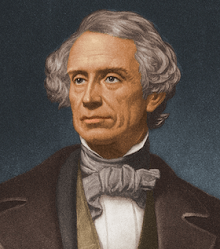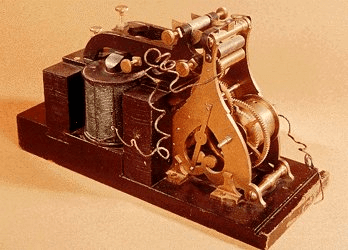Who Invented Telegraph
Samuel Morse invented the telegraph in 1837. He further worked on and developed the telegraph till the 1840s. Telegraph completely changed the way people far away from each other communicated. For long-distance communication, it transmitted electrical signals through a wire connected between stations. Additionally, Samuel Morse also helped the telegraph work efficiently by designing a code known as the Morse Code. It facilitated the transmission of complex messages by converting English alphabet letters into the code of dots and dashes. What Led to the Invention of TelegraphSamuel Morse was born in 1791. He met Charles Thomas Jackson in 1832 while returning from Europe. Michael Faraday had just invented the electromagnet and was a topic of discussion amongst the travelers while Morse was on the ship. Charles had good knowledge of electromagnetism which interested Morse. Morse then started performing experiments with Charles's electromagnet. While experimenting, he designed the concept of a single-wire telegraph, in which he discovered that it is possible to send messages over the wire. 
Early Long-Distance CommunicationPeople used smoke signals, flags, lights, and drumbeats to communicate before telegraphing in many countries. Although this system was reliable, it had limitations like weather conditions and factors hindering visibility. Then, Semaphore was developed in the 1790s. It comprised of large arms which moved to signal letters and numbers. Along with these arms, it had two telescopes to see the other communicating station. Semaphore had similar shortcomings as the smoke signals and drum beats. The invention of the electric telegraph then turned out to be a more reliable option. The invention of the battery and the magnetic needle that can be deflected by electric current led to the invention of a more sophisticated way of long-distance communication that is the electric telegraph. Many researchers began experimenting, and some found a way to better communication systems. Sir William Cooke and Wheatstone designed a telegraph consisting of five magnetic needles projected towards the letter and numbers. Morse developed a single wire circuit telegraph along with Leonard Gale and Alfred Vail. Leonard Gale knew Joseph Henry's electrical work, which included ringing a bell at a distance by opening and closing a circuit. Alfred Vail was a technician. Together with the help of Gale and Vail, Henry's article helped Morse achieve success in inventing the telegraph. The Morse CodeIn the 1830s, Morse and Vail developed the Morse code to facilitate electric signal transmission across the wires. The Morse code converted the letters and numbers into dots and dashes such that the message can be read easily. Dots were short marks, and the dashes were long marks, which were assigned depending on the frequency of the letter or number. More frequently used letters had more accessible code as compared to the less frequent ones. The code is then rendered on paper before it is translated to English again. Success and Downfall of Telegraph SystemThe first telegraph system was set up between Washington D.C. and Baltimore, Maryland. Funded by U.S. Congress, this system was set up and tested by Morse and Vail in 1843. The first message through telegraph was sent on May 24, 1844, and read,"What hath God wrought!". Subsequently, the innovations and development in the telegraph took place. One of the developments was by Ezra Cornell, and it was of good quality insulating telegraph wires. Another was the Quadruplex system which allowed to send four messages altogether through the same wire. Telegraph soon became popular among the people as it was fast, convenient, and accessible. However, more stations were required for the success and easy transmission of messages. Soon cities were connected and the Atlantic coast, after which wires would record messages in dots and dashes. The Western Union Telegraphy Company laid the first transcontinental telegraph line. Impact of TelegraphThe electric telegraph affected lives significantly. It had an enormous impact on wars, journalism, and business. The news could travel faster than before because of the telegraph. However, new technologies similar to the telegraph soon started emerging. Over the years, these technologies overrode the telegraph, making it the least used means for long-distance communication. Although it is no more used as a means of communication, the telegraph connected people when no advanced technologies were available.
Next TopicWho Invented train
|
 For Videos Join Our Youtube Channel: Join Now
For Videos Join Our Youtube Channel: Join Now
Feedback
- Send your Feedback to [email protected]
Help Others, Please Share










